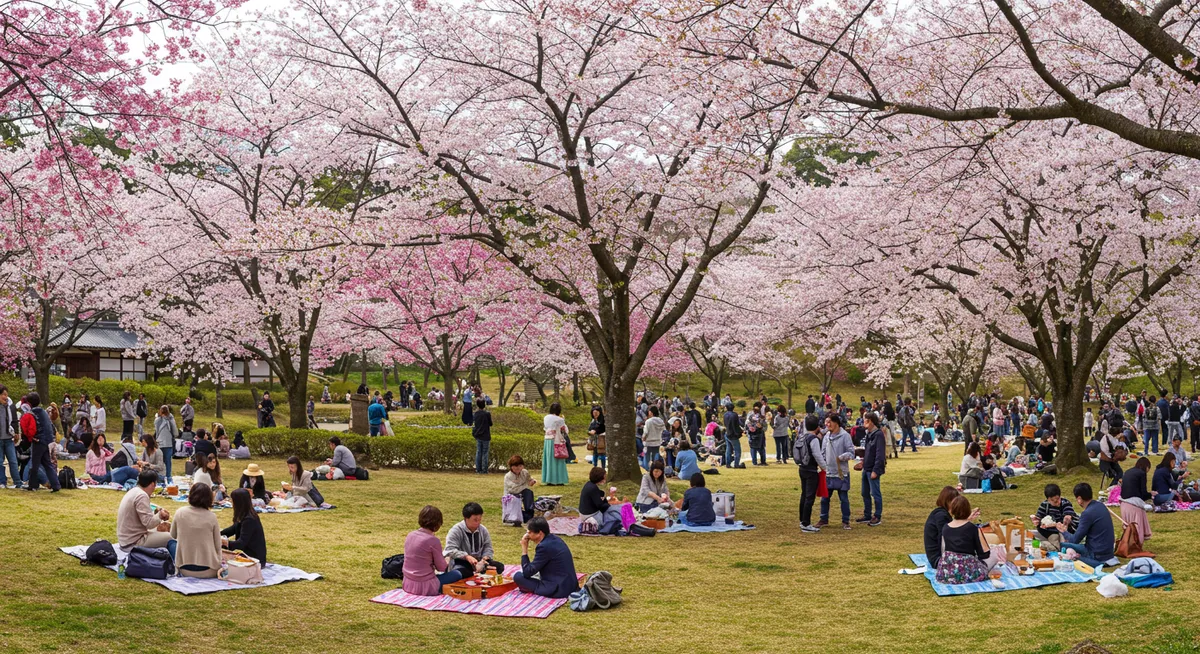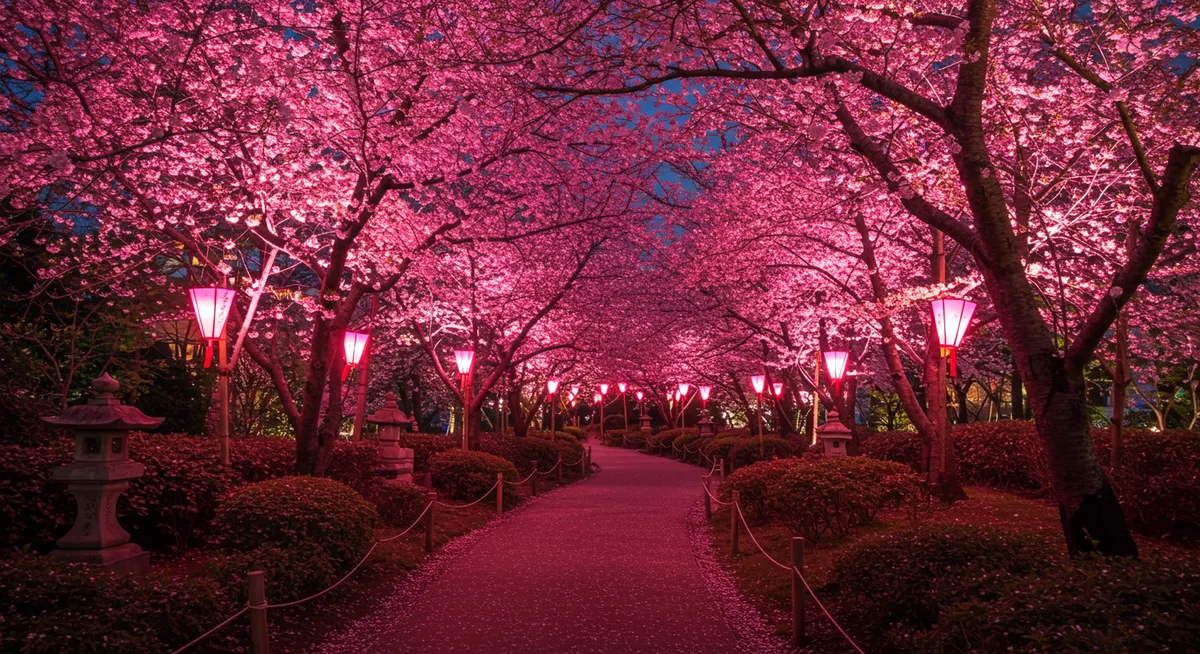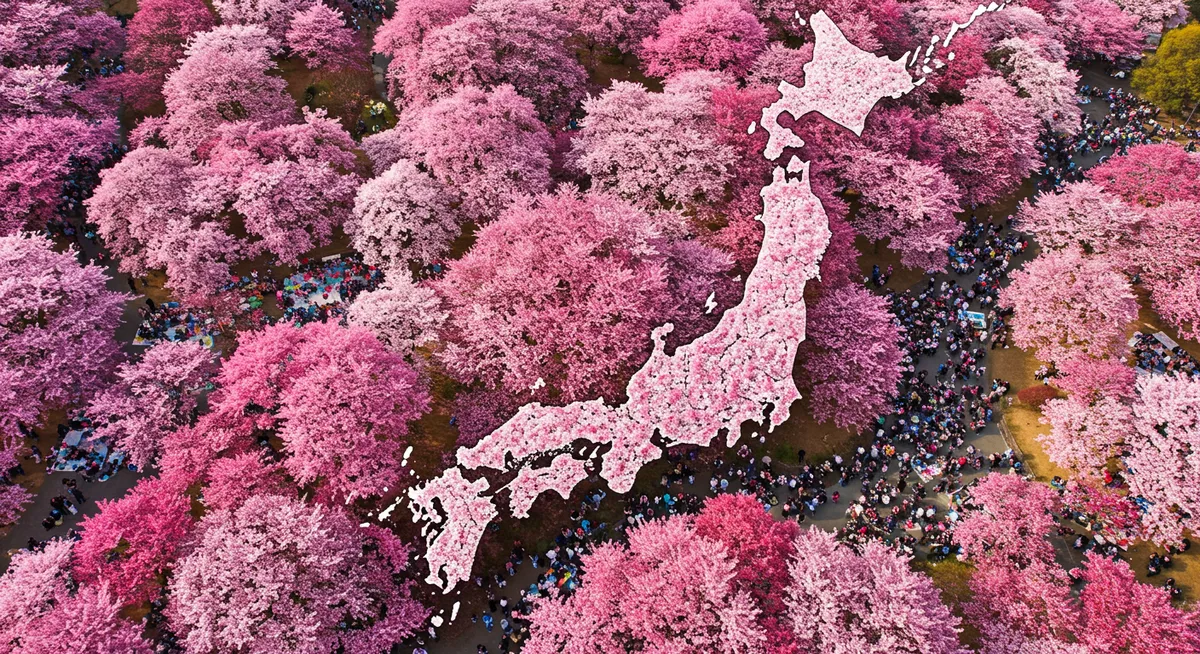Hanami Guide | Japan's Cherry Blossom Festival

Hanami: Japan's Enchanting Cherry Blossom Festival
Each spring, Japan undergoes a remarkable transformation as waves of delicate pink and white cherry blossoms sweep across the country from south to north. This fleeting natural phenomenon has inspired one of Japan's most beloved cultural traditions—hanami, the centuries-old practice of cherry blossom viewing. Far more than simply admiring flowers, hanami represents a profound cultural ritual that celebrates the transient beauty of nature, brings communities together, and connects modern Japanese society with its ancient past. This guide explores the essentials of experiencing cherry blossom season in Japan, providing cultural context and practical information for this uniquely Japanese celebration.

The Cultural Significance of Cherry Blossoms
Japan's relationship with cherry blossoms reflects deep cultural and philosophical values:
- Mono no Aware: The sakura embody the Japanese aesthetic concept of "the pathos of things"—a gentle sadness at the transience of beauty
- Historical Tradition: Cherry blossom viewing dates back over 1,000 years to the Heian period when imperial court nobles wrote poetry beneath the trees
- National Symbol: Cherry blossoms represent Japanese identity and appear on everything from the 100 yen coin to government emblems
- Renewal and Optimism: Blooming at the beginning of both the school and fiscal year, sakura symbolize new beginnings in Japanese society
The Hanami Experience
Cherry blossom season can be enjoyed through several distinctive experiences:
Traditional Hanami Picnics
The core experience involves gathering with friends, family, or colleagues under blooming trees:
- Securing Space: People send junior colleagues early in the morning to reserve prime spots with plastic tarps
- Festive Atmosphere: Picnic parties range from elegant affairs to boisterous gatherings with plentiful food and drink
- Traditional Foods: Special seasonal foods and sakura-themed delicacies are central to the experience
- Community Building: The shared appreciation creates bonds between participants

Yozakura: Night Viewing
Special evening illuminations create a different atmosphere for cherry blossom appreciation:
- Magical Ambiance: Trees illuminated against the night sky create a dreamlike experience
- Popular Venues: Major parks and castle grounds install special lighting during the season
- Festival Elements: Many yozakura include food stalls, music, and traditional performances
- Extended Viewing Hours: Illuminations allow enjoyment of the blossoms well into the evening
Hana-Meguri: Blossom Tours
Many Japanese people make pilgrimages to famous cherry blossom sites:
- Historic Gardens: Many gardens were designed centuries ago specifically for optimal cherry blossom viewing
- Scenic Routes: Pathways lined with hundreds of cherry trees create tunnel-like visual experiences
- Castle Settings: Japan's historic castles surrounded by cherry trees offer particularly photogenic settings
- River Viewings: Many rivers are lined with cherry trees, creating reflections in the water
Planning Your Cherry Blossom Experience
Creating a memorable hanami adventure requires careful planning:
Timing and "Sakura Front"
Cherry blossom timing varies by location and year:
- The Sakura Zensen: Japan's "cherry blossom front" moves northward as spring progresses, starting in Okinawa in January and reaching Hokkaido in May
- Peak Bloom (Mankai): Full bloom typically lasts only about one week in each location
- Weather Variables: Timing can shift by 1-2 weeks based on that year's weather patterns
- Bloom Forecasts: Japan's meteorological agency and news outlets provide detailed bloom predictions
Top Viewing Locations
While cherry blossoms can be enjoyed throughout Japan, certain locations are particularly renowned:
- Tokyo: Ueno Park, Shinjuku Gyoen, and the Meguro River offer iconic urban hanami experiences
- Kyoto: Maruyama Park, Philosopher's Path, and the Kamogawa River blend historical settings with natural beauty
- Hirosaki: The castle park features 2,600 trees and a moat covered with fallen petals
- Yoshino: This mountain town is considered Japan's most famous cherry blossom destination with thousands of trees at different elevations
- Himeji: The white castle against pink blossoms creates one of Japan's most iconic scenes
Practical Considerations
A successful cherry blossom trip requires attention to logistical details:
- Advanced Planning: Book accommodations 6-12 months in advance for peak season
- Transportation: Consider a Japan Rail Pass for visiting multiple viewing locations
- Timing Flexibility: Build flexibility into your itinerary to adjust to actual bloom times
- Crowd Management: Visit popular sites early morning or evening to avoid peak crowds
- Weather Preparation: Spring weather can be unpredictable; bring layers and rain protection

Cherry Blossom Cultural Traditions
Understanding traditional elements enhances the hanami experience:
Seasonal Foods and Drinks
Special culinary traditions accompany the season:
- Sakura Mochi: Rice cakes wrapped in pickled cherry leaves
- Hanami Dango: Pink, white, and green rice dumplings on skewers
- Sakura-flavored Foods: From teas and lattes to Kit Kat chocolates and ice cream
- Cherry Blossom Sake: Special seasonal releases often with petals floating inside
Festival Traditions
Many regions hold special events during cherry blossom season:
- Sakura Matsuri: Dedicated festivals featuring traditional performances and foods
- Cherry Blossom Competitions: Some regions hold contests for best photograph or poetry
- Royal Viewing Party: The Japanese Imperial family hosts an exclusive cherry blossom event
- School and Work Celebrations: The season coincides with entrance ceremonies and new employment
Beyond the Beauty: Cultural Understanding
Cherry blossoms hold profound cultural meaning in Japan:
- Japanese Aesthetics: Sakura embody Japanese values of simplicity, natural beauty, and impermanence
- Literary Tradition: Cherry blossoms appear in Japanese poetry, literature, and art for over a millennium
- Historical Symbolism: Samurai identified with the short-lived blossoms, seeing them as metaphors for their own lives
- Modern Significance: The flowers continue to represent the Japanese character in contemporary culture
Experience Japan's Most Beloved Season
Japan's cherry blossom season offers travelers a window into core aspects of Japanese cultural values—the appreciation of transient beauty, the importance of seasonal rhythms, the balance between celebration and contemplation, and the deep community bonds formed through shared aesthetic experiences.
By approaching hanami with an understanding of its cultural significance while participating in its joyful communal spirit, visitors can experience one of the world's most perfectly realized celebrations of natural beauty and its profound connection to human experience.
Ready to experience cherry blossom season in Japan?
Start planning your hanami adventure with our practical travel tips and insider guides to the most breathtaking viewing locations.
Check back soon for our upcoming detailed guides to regional cherry blossom forecasts, photography tips, and traditional hanami recipes.
Explore More Asian Festivals
Hanami is just one of many extraordinary cultural celebrations across Asia. Discover more incredible festivals in the region:
Continue your exploration of Asian festival culture by returning to our Asian Festivals Guide, where you can discover other vibrant celebrations from India's Holi Festival to Thailand's Songkran.
← Back to Asian Festivals